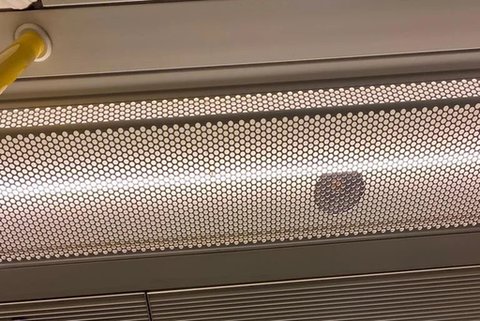Comment
Why the London Underground should switch to LED lighting
Lowe & Oliver director Fred Lowe explains the benefits of LED lighting on the Tube – and makes a public offer to London Mayor Sadiq Khan.

Caption Credit:

Lowe & Oliver director Fred Lowe
Committing to making London net-zero by 2030 was an enormous pledge by London Mayor Sadiq Khan, one which no doubt contributed to his re-election.
The urgency has not subsided, with a new countdown clock unveiled by King Charles and the Mayor counting down the time left to balance global greenhouse gas emissions to prevent heating the Earth more than 1.5°C above pre-industrial levels – it’s a policy which is impossible to ignore.

Lowe & Oliver director Fred Lowe
At Lowe & Oliver, we are fully supportive of these ambitious efforts and have delivered a wide range of renewable solutions for companies and organisations across the capital.
Our question is this – the Mayor of London rightly expects businesses and individuals to play their part, should his administration not lead by example?
An easy choice for TfL
The Mayor appointed himself chair of Transport for London (TfL) and the whole organisation’s aim is to implement his transport strategy. Essentially, the buck stops with him.
LED lighting is affordable, efficient and eco-friendly – even the most fervent opponents of net zero would agree with that assessment.
So why is the London Underground not plastered with it?
Instead, TfL operates lighting systems that are not fit for purpose. Considering the worldwide reputation and appeal of the Tube, we believe that the network should be leading by example.
The Underground handles up to five million passengers a day, many visitors from overseas. What message are we sending to them.
Lowe & Oliver has made an offer to the Mayor to deliver the works at ‘cost’ price.
The necessary upgrades and investment would pay for itself in a matter of months. In fact, Lowe & Oliver has made an offer to the Mayor to deliver the works at ‘cost’ price.
We estimate, albeit roughly without detailed surveys, that each carriage would cost £2,777.50 – including materials, labour, and light fitting. We guarantee that the initial cost will pay for itself on a rapid timescale.
We’ve installed the upgrades across a variety of settings – take one upgrade project at a primary school in Oxfordshire. The cost of the installation was £9,300 and we estimate the annual savings to reach £7,900, meaning a payback period of 1.3 years. After that, the considerable savings can be pumped back into the school’s coffers.
Imagine those savings across the entire London Underground. Some parts of the network are up to scratch, but it’s evident that large swathes of the system are not.
It’s an investment the Mayor must consider, whether through our offer or a different provider.
Why LED lighting is the obvious choice
Upgrading to LED systems would deliver a positive return-on-investment and save Londoners money. A complete refit to LED lighting from older fluorescent or incandescent bulbs can give tangible energy savings of 50-80% each year. Across the entire network that’s a huge saving.
An incandescent bulb may need to be replaced every three months when used heavily, like in an underground carriage – roughly 1000 hours before it burns out. An LED bulb can serve for 50,000 hours of use, reaching ten years.
LED lights are not only more efficient in their energy use but also in the way they apply and disperse light. In a relatively small underground carriage, using the light more effectively will cut costs and waste.
Travelling on the Tube on a hot and stuffy summer’s day is an unpleasant experience, worsened by heat-emitting light systems. In some older models of light bulbs, up to 90% of the energy produced is heat rather than light, which is wasteful and risky. LED lights are safe and cool to the touch.

Non-LED lighting on a London Underground carriage
LED lights contain less metal, little or no glass, and use no toxic substances – such as the mercury used in the coils of fluorescent bulbs. That makes them cheaper to make and easier to recycle.
A typical LED bulb uses only 5 watts of energy, 10 times less than the average 50 watts used by a standard halogen bulb. In an era of energy-cutting measures rightly supported by the Mayor, cutting down on this waste must be a priority.
As demonstrated, the benefits of LED lighting are comprehensive and far-reaching. Honestly speaking, there is no good reason not to upgrade.
We made a public offer to Sadiq Khan to deliver the necessary upgrades at cost. We’ve installed LED lighting in many of London’s most memorable spots such as Lincoln’s Inn and Whittington House – we want to add the famous London Underground to that list.
The Mayor has our offer and we’re willing to be flexible in terms of delivery/installation – all he has to do is call.